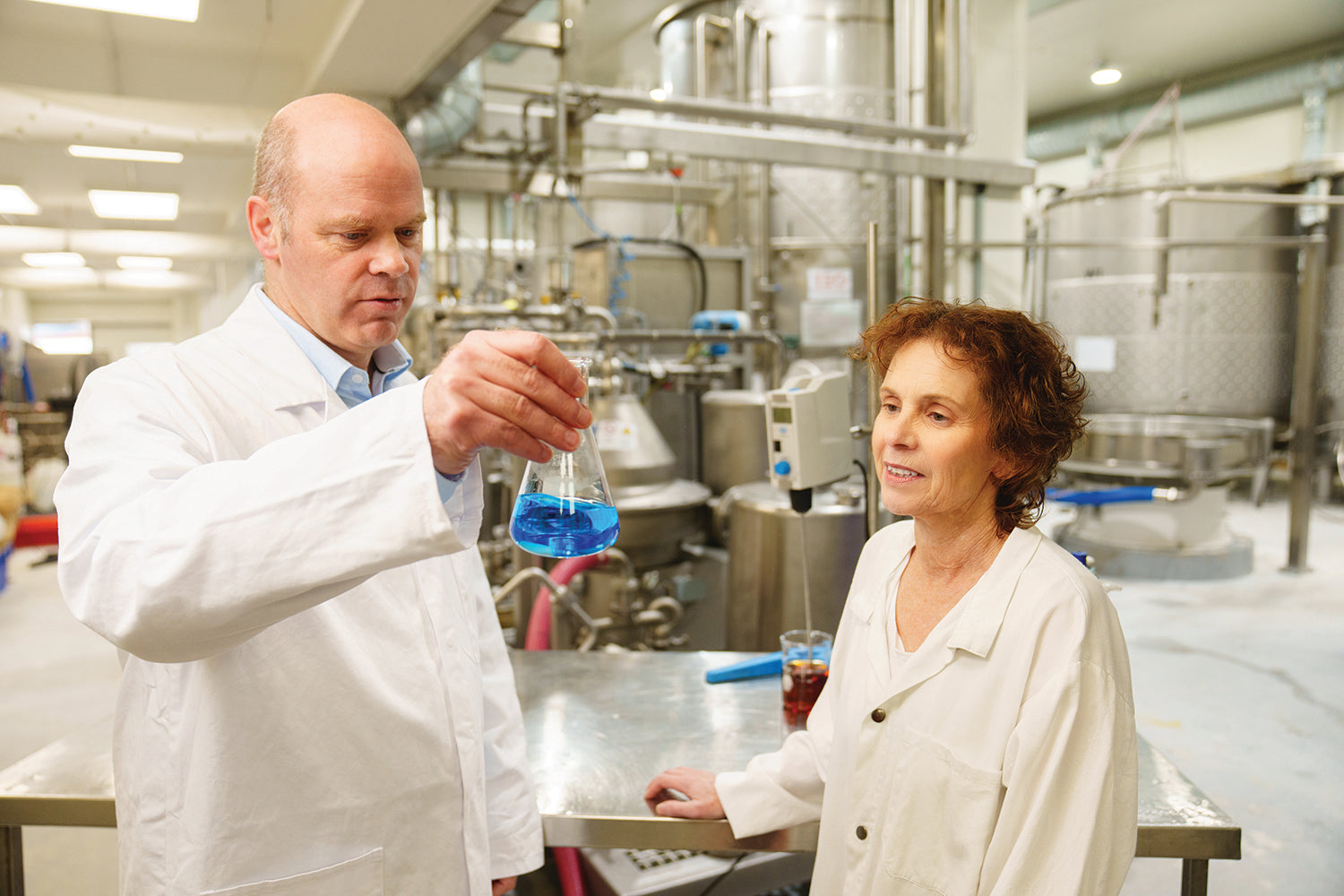What is NAC and Cystine?
NAC (N-acetyl cysteine) is an increasingly popular dietary supplement aimed at helping a wide range of conditions. It is a chemically modified form of the amino acid cysteine, a conditionally essential amino acid important in sulfur metabolism in the body as well as for hair, skin and nail health. NAC is not very well absorbed by the body and dosage in supplement form is commonly high to compensate for this (1).
In simple terms: NAC is like a special delivery form of a natural protein building block (cysteine) that your body needs but doesn’t absorb very well. So supplements pack in extra to make sure you get enough!
What does it do?
Although NAC started in the 1960's as a treatment for cystic fibrosis, it's usage expanded (2) to treatment for overdose of painkillers (such as acetaminophen) and more recently to a wide range of ailments from lung, liver and kidney treatment through to chronic inflammation and brain health. The main way that NAC works is by boosting the ability of the body to make glutathione. Glutathione is the master antioxidant in every cell of the body and is made of the amino acids glutamine, cysteine and glycine joined together. NAC is not actually helping the body directly, instead it is providing a protected form of the amino acid cysteine so the body can use this to make glutathione. The essential function of NAC is to deliver cysteine.
Think of it this way: NAC isn’t doing the heavy lifting itself—it’s like a courier delivering a key ingredient (cysteine) that your body needs to whip up its best defense tool: glutathione, the ultimate antioxidant shield!
Glutathione plays a central role in protecting every cell from stress and is essential in protecting the body from insult, injury, disease and the ageing process (3). The importance of glutathione is very significant and reduction in glutathione is a key factor in any condition associated with inflammation, stress, toxicity and ageing, including lung disorders (inflammatory stress), kidney and liver problems (toxicity stresses), cardiovascular disease (inflammation) and neurodegenerative disease (oxidative stress). The medical journal Antioxidants summarised it in 2023 in a special issue Glutathione in Health and Disease (4).
Quick version: Glutathione is like a superhero for your cells, fighting off stress, sickness, and ageing. Less of it means your body struggles more, so keeping levels up is super important!
If cysteine or glutathione are so important, wouldn’t taking them be better than NAC?
Unfortunately not. Cysteine has moderate toxicity on its own (5) and both glutathione and cysteine are poorly absorbed by the body (6). The body needs cysteine and its related form cystine (Cys) in readily absorbed dietary sources and to use this to build glutathione (GSH) inside cells.
Here’s the catch: Taking cysteine or glutathione straight up doesn’t work well. It’s like pouring water on a waxed jacket—your body just doesn’t soak it up. You need the right form that your body can use properly!
As it is an amino acid, can you get cysteine from eating protein?
Yes, that is possible if you eat the right protein. Getting cysteine (and the related cystine) from protein enables better absorption and bioavailability for this important amino acid. The clinical benefits of cysteine enriched proteins have been well documented, including their ability to increase glutathione levels (7). There is strong clinical evidence in the ability of cysteine (and the related cystine) rich proteins in addressing the acute and chronic conditions associated with oxidative stress (8), inflammation, ageing and toxicity as well as brain function. Unfortunately, most proteins are low in the amino acid cystine and so not a good food source, with bovine or marine collagen, soy, pea, dairy, typically having between 0 and 1.9g/100g.
Food for thought: You can get cysteine from food—just not from all proteins. Most common ones don’t have much. It’s like searching for gold in the wrong stream. You need proteins rich in cysteine to get real benefits!
Due to the unique ovine source and the novel protein extraction process, the ovine collagen Ovitage® found in Everee Women (9) has a higher cystine content than all other common dietary proteins. This provides the important amino acid cystine in an absorbable and bioavailable food format able to naturally provide the essential components needed for the body to make glutathione while avoiding the chemically modified and relatively poorly absorbed supplement NAC.
Why this matters: Ovitage® is like the premium fuel for your body’s natural defence system—it gives you what you need, in a form your body actually knows how to use, without needing a lab-made shortcut.
References
- Olsson B, Johansson M, Gabrielsson J, Bolme P. Pharmacokinetics and bioavailability of reduced and oxidized N-acetylcysteine. Eur J Clin Pharmacol. 1988;34(1):77-82. doi: 10.1007/BF01061422. Link
- Schwalfenberg GK. N-Acetylcysteine: A Review of Clinical Usefulness (an Old Drug with New Tricks). J Nutr Metab. 2021 Jun 9;2021:9949453. doi: 10.1155/2021/9949453. Link
- Teskey G, et al. Glutathione as a Marker for Human Disease. Adv Clin Chem. 2018;87:141-159. doi: 10.1016/bs.acc.2018.07.004. Link
- Giustarini D, et al. How to Increase Cellular Glutathione. Antioxidants (Basel). 2023 May 13;12(5):1094. doi: 10.3390/antiox12051094. Link
- Hughes CE, et al. Cysteine Toxicity Drives Age-Related Mitochondrial Decline by Altering Iron Homeostasis. Cell. 2020 Jan 23;180(2):296-310.e18. doi: 10.1016/j.cell.2019.12.035. Link
- Sharma DK, Sharma P. Augmented Glutathione Absorption from Oral Mucosa and its Effect on Skin Pigmentation: A Clinical Review. Clin Cosmet Investig Dermatol. 2022 Sep 10;15:1853-1862. doi: 10.2147/CCID.S378470. Link
- Wolber F., et al. Cysteic Acid in Dietary Keratin is Metabolized to Glutathione and Liver Taurine in a Rat Model of Human Digestion, Nutrients (2016) 8 (2): 104. Link
- McPherson R, Hardy G. Clinical and nutritional benefits of cysteine-enriched protein supplements, Current Opinion in Clinical Nutrition and Metabolic Care (2011), 14:562–568. Link
- Everee Women Blog: Not All Collagen is Created Equal






